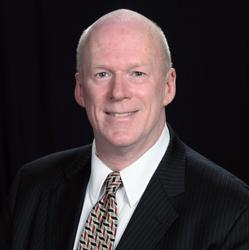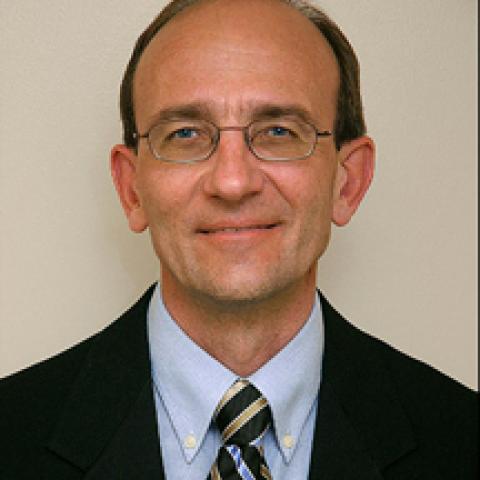Nunc Dimittis
Ronald Kent Arnatt, 88, died August 23, 2018. He was born January 16, 1930, in London, England, and was a boy chorister at Westminster Abbey and King’s College, Cambridge. He was educated at Trent College, Derbyshire, Trinity College of Music, London, and Durham University. From the latter, he was granted a Bachelor of Music degree in 1954. In 1970, Arnatt was awarded a Doctor of Music degree from Westminster Choir College, Princeton, New Jersey.
Over the course of his career he held numerous positions, including instructor, American University, Washington, D.C.; director of music, Mary Institute, St. Louis, Missouri; professor of music and director choral activities, University of Missouri, St. Louis; director of music and organist, Christ Church Cathedral, St. Louis; founder and conductor, St. Louis Chamber Orchestra and Chorus; conductor and music director, Bach Society of St. Louis; director of music and organist, Trinity Church, Boston, Massachusetts; president, American Guild of Organists; director of music and organist, St. John’s Episcopal Church, Beverly, Massachusetts; professor of church music and department head, Westminster Choir College; and editor, ECS Publishing, Boston. He was also the recipient of numerous awards, fellowships, and prizes.
Ronald Arnatt married Carol Freeman Woodward, who died in 2017. They had two daughters who survive, Ronlyn and Sylvia. He is also survived by nine grandchildren and nine great-grandchildren.
Jon L. Bertschinger, 65, died July 13, 2018, in St. Joseph, Missouri. He was born July 25, 1952, in Burlington, Iowa. Bertschinger began taking piano lessons at an early age, followed by organ lessons on the new M. P. Möller organ at his church, Messiah Lutheran Church, in Burlington, in 1958. He sang in and accompanied one of the five choirs at that church while in junior high school.
Bertschinger began work for the Temple Organ Company when it moved to Burlington in 1966, helping to install the rebuilt organ at First Methodist Church in 1967. He was still working with David Cool, son of the company’s founder, Fred Cool, when the church burned in 2007, and he accomplished the tonal finishing for the new 60-rank organ for the rebuilt church.
Bertschinger was on the volunteer staff for the Auditorium and Temple in Independence, Missouri, performing recitals under the direction of Jan Kraybill, former director of music for the Community of Christ Church. He also had regular church jobs in St. Joseph, sometimes two at a time, playing over the years at Westminster Presbyterian, Trinity Presbyterian, First Christian, and, up until his death, Brookdale Presbyterian.
Wesley Coleman Dudley, II, 85, of Williamsburg, Virginia, and Bar Harbor, Maine, died July 25 in Williamsburg. He was born in Buffalo, New York, December 15, 1932. He attended Nichols School and graduated from St. Paul’s School, Concord, New Hampshire, before receiving his bachelor’s degree from Yale University, New Haven, Connecticut. After two years in the United States Navy in Hawaii, he returned to Buffalo in 1958 to work at Worthington Pump Company. Six years later he became an entrepreneur, managing Auto Wheel Coaster Company, North Tonawanda, New York, before joining his family’s management office. He began spending winters in Williamsburg, Virginia, and summers in Bar Harbor, Maine, allowing him to explore his two dominant passions: pipe organs and boating.
A quiet philanthropist, he supported many projects anonymously, but there was one exception, the public radio program, Pipedreams. He was also a frequent donor to the Organ Historical Society.
Wesley C. Dudley was preceded in death by his daughter, Katherine Mary Dudley. He is survived by his wife of sixty-two years, Lucinda Nash Dudley, and his children, Nanette (David) Schoeder, Donald M. (Janet) Dudley, three grandchildren, Nicholas Schoeder, Katherine Dudley, and MacLaren Dudley, their mother Meg Dudley, and two step-grandchildren, Grace and Madeleine Waters. Memorial contributions may be made to Minnesota Public Radio, attn. Jamie Ziemann, 480 Cedar St., St. Paul, Minnesota 55101, or to the Dudley Scholarship at the Eastman School of Music, attn. Suzanne Stover, 26 Gibbs St., Rochester, New York 14604.
Steven E. Lawson, 63, of New York, New York, died suddenly, August 19, of natural causes. He had completed his usual Saturday evening practice at the Church of the Heavenly Rest, where he had served as assisting organist for 21 years, and failed to show up on Sunday morning.
Lawson was born September 9, 1954, in San Diego, California, attended elementary school in Fullerton, California, and high school in Topeka, Kansas. He earned the Bachelor of Music degree in organ performance at Oklahoma City University, where he studied with Wilma Jensen, and the Master of Music degree in organ performance at Indiana University, also studying with Wilma Jensen. At Indiana University, he minored in carillon performance and accompanied the University Singers, working with conductors Robert Shaw and Margaret Hills. Before his appointment at the Church of the Heavenly Rest, Lawson served St. Luke’s Lutheran Church near Times Square in New York City for ten years.
As an active member of the New York City Chapter of the American Guild of Organists, Lawson served as registrar, webmaster, and editor of the chapter’s concert calendar, but his towering achievement was the New York City Organ Project (NYCOP). Starting with his interest in gathering the histories of various pipe organs in churches he served or played in, the NYCOP grew into a seemingly limitless body of information, published online as part of the website of the New York City AGO Chapter. Thousands of organs are diligently documented with histories, specifications, and photographs. (For example, see the documentation of organs at the Church of the Heavenly Rest: www.nycago.org/organs/nyc/html/HeavenlyRest.html.) Friends and colleagues have joked that no one knew the organs of New York City as well as Lawson, given the countless hours he traveled around the city carrying heavy photographic equipment.
Lawson’s passion for collecting and making available this type of information drew him to the Organ Historical Society’s Pipe Organ Database, where he continued his vast contribution to the art of the organ, expanding his boundaries from New York City to include the entire United States. He worked closely with the OHS Database Committee, contributing and updating countless entries of organs, and behind the scenes with the development of a new, more user-friendly version of the database.
Steven E. Lawson is survived by his parents, George W. Lawson and Doris E. Lawson, and his cousin Linda Driskel.
—John Bishop
Frank G. Rippl, 71, died August 11, in Appleton, Wisconsin. Born in Neenah, Wisconsin, Rippl earned the Bachelor of Music Education degree from Lawrence University Conservatory of Music, Appleton, where he minored in organ, studying with Miriam Clapp Duncan. He received a Master of Music degree in Orff-Schulwerk from the University of Denver. Rippl also studied at the Cleveland Institute of Music, as well as the Royal School of Church Music in England.
In 1979 he co-founded the Appleton Boychoir, for which he conducted and played organ for 26 years until his retirement from the organization in 2010. He initiated the Boychoir’s popular Festival of Nine Lessons and Carols held each Christmas in Memorial Chapel, Lawrence University. During Rippl’s tenure, the choir performed as choir-in-residence at the Green Lake Festival of Music under Sir David Willcocks and toured nationally and internationally.
Rippl taught elementary vocal music in the Appleton Area School District for 33 years. Upon retirement from school teaching, he pursued additional organ study with Wolfgang Rübsam. In 1996 he founded the Lunchtime Organ Recital Series held each summer in the Appleton area, attracting organists from all over the country.
Rippl began playing the organ at St. Mary Catholic Church, Menasha, later at Saint Bernard Catholic Church, also of Menasha. He was organist and choirmaster of All Saints Episcopal Church, Appleton, for over 46 years (1971–2018), retiring January 7. At his retirement, the parish established a choral scholarship for Lawrence University students to sing in the church’s choir. (For information on Frank Rippl’s retirement celebration, see the April 2018 issue, page 8.)
Rippl served as dean of the Northeastern Wisconsin Chapter of the American Guild of Organists, was active in the Organ Historical Society (OHS) and the Packerland Theatre Organ Society, and performed on Minnesota Public Radio’s Pipedreams. He penned numerous OHS convention reviews for The Diapason. He accompanied silent movies on the organ for over 20 years for the American Theatre Organ Society. He loved teaching and the pipe organ, and combined these two passions by giving organ lessons to many students.
In 2007, Rippl received the Rotary Club Paul Harris Service Award for service to the community; he played for the Appleton chapter’s weekly meetings for many years. While a student at Lawrence he was Vince Lombardi’s favorite pianist at Alex’s Crown Restaurant, as cited in David Moraniss’s When Pride Still Mattered. In 2014 he became director for the new Memory Project choir, “On a Positive Note,” for those suffering from memory loss and their families.
Frank Rippl is survived by his wife of 43 years, Carol Jegen, his brothers Bill Rippl, Rick (Marie) Rippl, and Dan (Becky) Rippl, as well as numerous extended family members. His funeral was held August 21 at All Saints Episcopal Church, Appleton. Memorial donations may be directed to All Saints’ Episcopal Church, Appleton, the Appleton Boychoir, or his family for an organ scholarship.
James Ralph Verdin, of Indian Hill, Ohio, died August 8. He was born July 30, 1936, in Cincinnati. He grew up in Mariemont and graduated from Mariemont High School in 1955. After graduation, Verdin served in the United States Army.
Verdin was president and chief executive officer of the Verdin Company of Cincinnati, a family-owned business since 1842 that installs bells, tower and street clocks, electronic carillons, and organs across the United States and abroad. Notable installations include the World Peace Bell, the Ohio Bicentennial Bell Project, and the Verdin Mobile Bell Foundry.
Verdin’s vision to redevelop and transform the Pendleton Neighborhood in Over the Rhine, Cincinnati, led to the founding of the Pendleton Art Center, Pendleton Square Complex, the old Car Barn (Nicola’s Restorante), and the restoration of St. Paul’s Church. The church became the corporate offices of the Verdin Company and is now the Bell Event Centre.
A funeral Mass was celebrated August 16 at Old St. Mary’s Catholic Church, Cincinnati. James Ralph Verdin is survived by his wife Carole (nee Conners), daughter Jill (Sam) Crew, and grandchildren Caroline Verdin Crew and Samantha Verdin Crew. Memorials may be made to Summit Country Day School, 2161 Grandin Road, Cincinnati, Ohio 45208.




